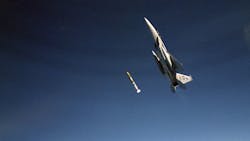Searching for satellite protection in contested space
ALBUQUERQUE, N.M. – As long as human beings have been sending satellites into space, they have been contemplating ways to destroy them. In recent years, the technology behind anti-satellite (ASAT) weapons has progressed considerably. Universe Today reports. Continue reading original article
The Military & Aerospace Electronics take:
29 Oct. 2019 -- What’s more, the ability to launch and destroy them extends beyond the two traditional superpowers (the U.S. and Russia) to include newcomers like India, China, and others.
For this reason, Sandia National Laboratories – a federal research center headquartered in New Mexico – has launched a seven-year campaign to develop autonomous satellite protection systems.
Known as the Science and Technology Advancing Resilience for Contested Space (STARCS), this campaign will fund the creation of hardware and software that will allow satellites to defend themselves.
Related: DARPA Blackjack to develop small, secure military satellites for low-Earth orbit
Related: Electronic warfare technology heading-up the battlefield
John Keller, chief editor
Military & Aerospace Electronics
